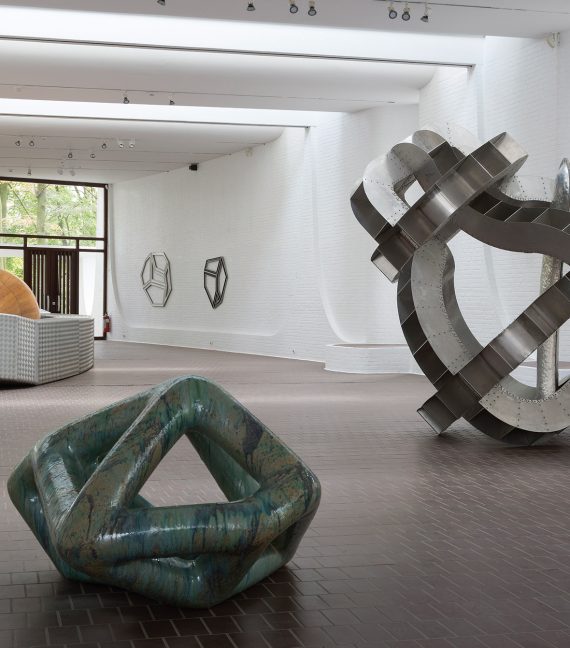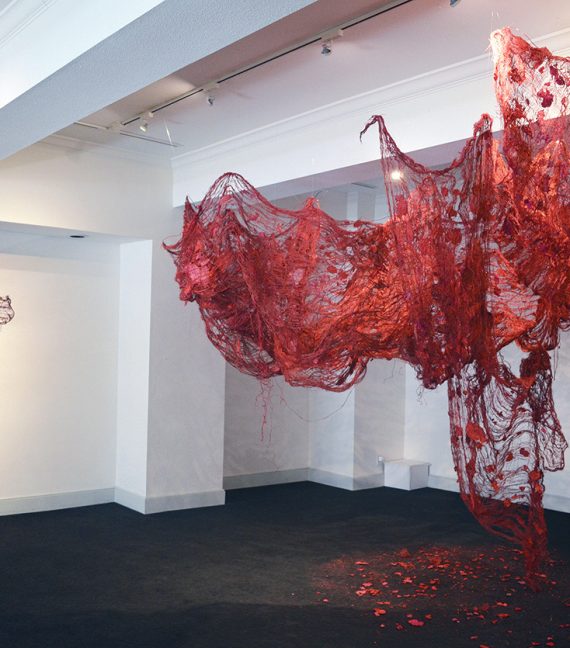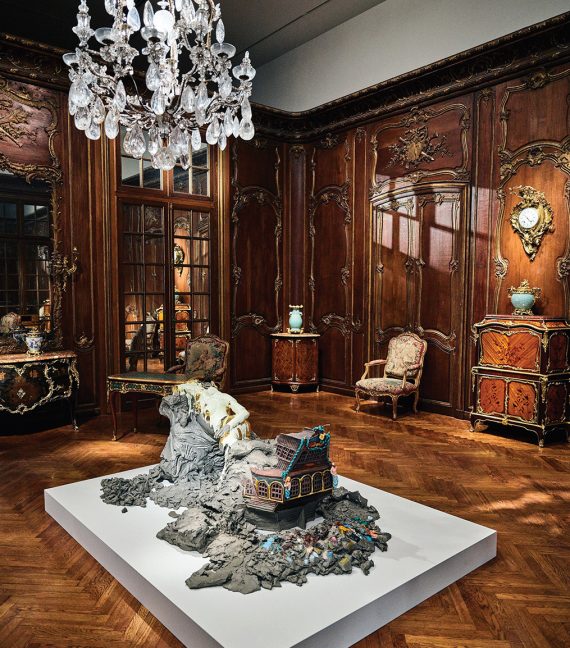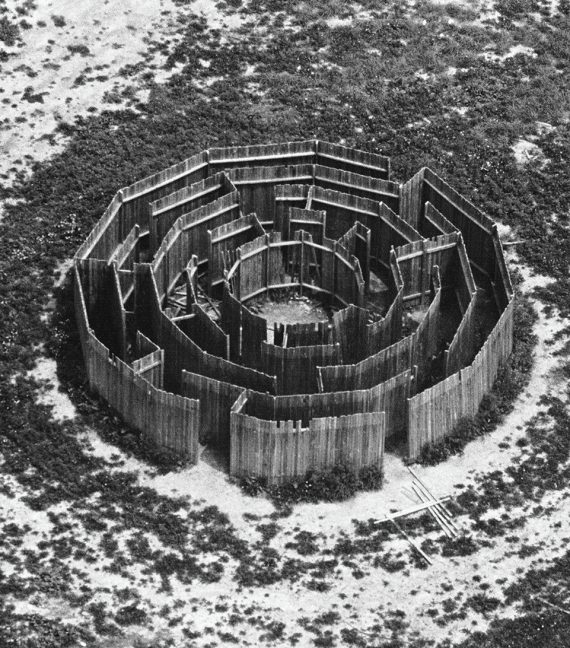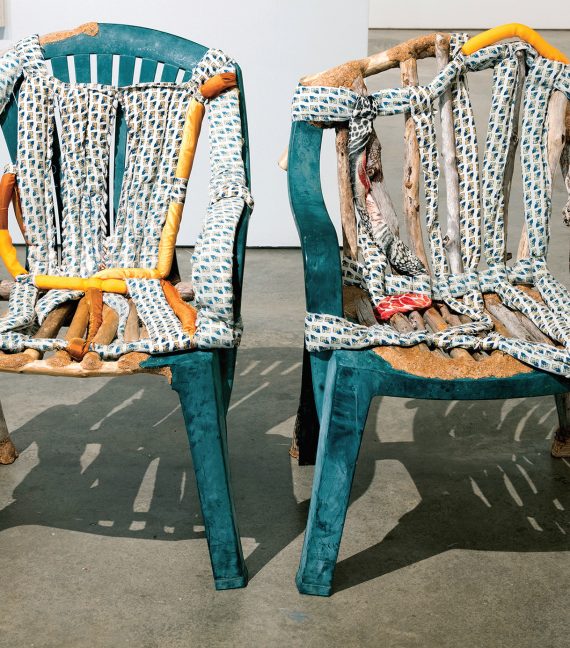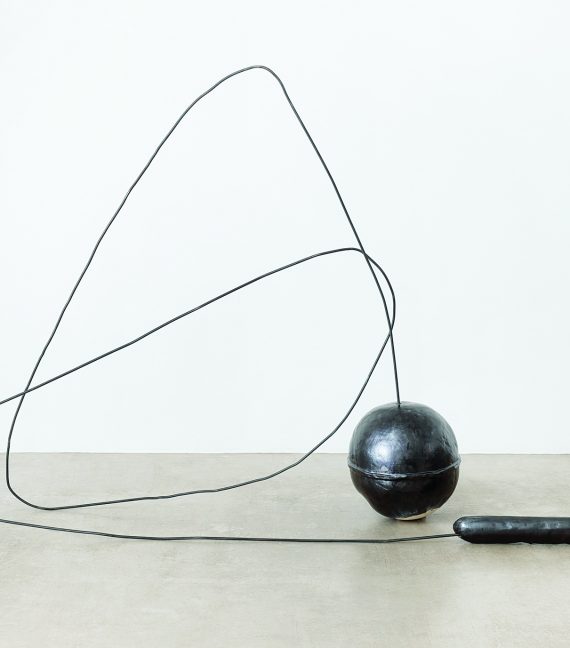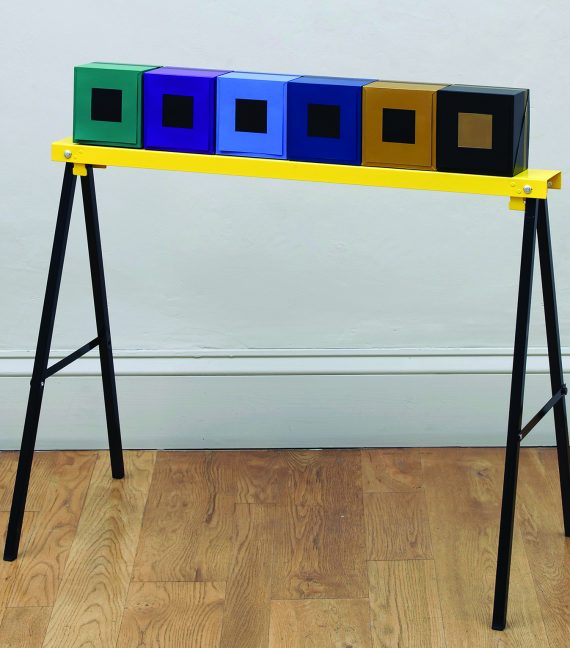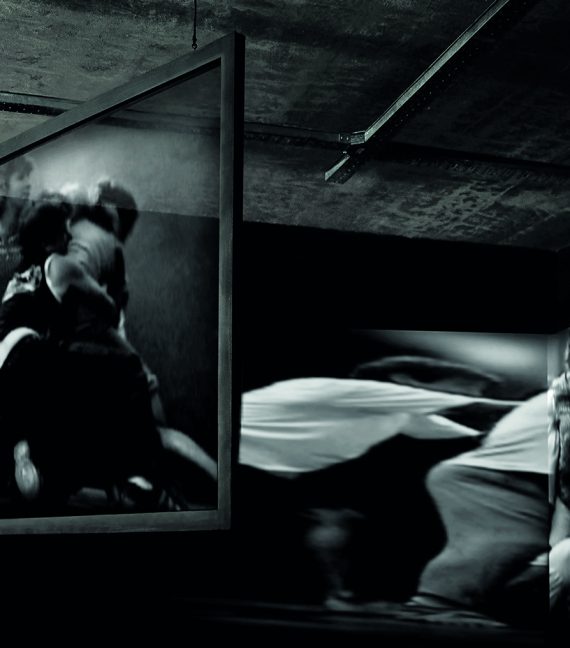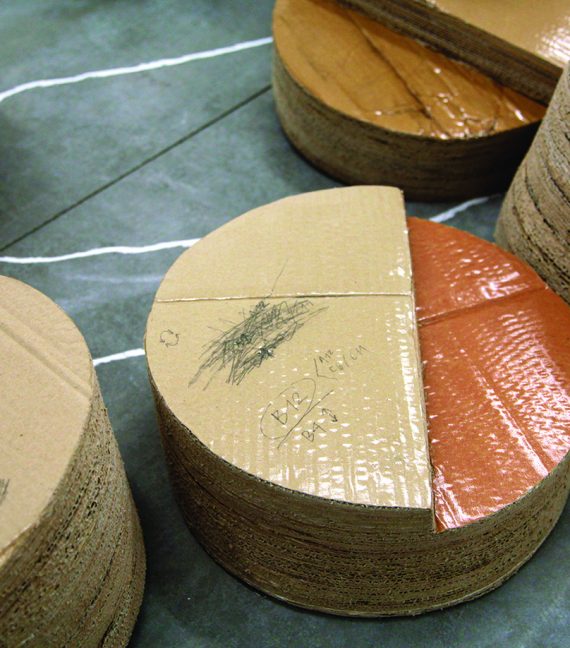Richard Deacon deliberates over a conversation as though it could become a physical object pinned together by ideas, treating words almost like buildings blocks for a sculpture. He explains everything as part of a process and sees materials and language as the elemental skin and bones of his sculptures, allowing them to make contact with
Nnenna Okore
SAN FRANCISCO Jenkins Johnson Gallery In the Igbo language of Nigeria, “Osimili,” the title of Nnenna Okore’s recent show, means a huge body of water. Okore, who spent most of her childhood in Nigeria (she was born in Australia), is now a professor of art at North Park University in Chicago. After graduating from the University of Nigeria in 1999 with a BA in painting, she received her MA and MFA from the University of Iowa in 2004 and 2005.
Vincent Fecteau: Submerged Forces
In The Shape of Time, anthropologist George Kubler organizes a history of objects and ideas from the perspective of innovation, replication, and mutation from an original, a “prime object.” Such prime objects can’t be reduced to something else; they arise from deep needs, not fashion, and they are fundamental to their specific function.
Urs Fischer
SAN FRANCISCO Legion of Honor/Fine Arts Museums of San Francisco Artists’ interventions in museum collections come in many forms, but their purpose is often to bring new meaning and resonance to objects that are so familiar as to have become almost invisible. Though Urs Fischer’s contemporary perspective on the Legion of Honor’s permanent collection thrilled some visitors while horrifying others, director Max Hollein’s decision to invite Fischer and his subversions brought a definite liveliness into the Legion’s neoclassical marble halls.
Alice Aycock: Systems of Energy
Alice Aycock was awarded the Lifetime Achievement Award from the International Sculpture Center in 2018. For a full list of Lifetime Achievement Award recipients, click here. Alice Aycock’s recent works bristle with an iconic energy. Curving tendrils of aluminum in dynamic repetition, like Futurist force lines freed from the canvas, erupt from the earth with propulsive power.
Jessi Reaves
PHILADELPHIA Institute of Contemporary Art, University of Pennsylvania In Jessi Reaves’s recent exhibition, her sculptural furniture was integrated both formally and functionally with a group of surreal still-life paintings by fellow New Yorker Ginny Casey. Curator Charlotte Ickes described these complementary bodies of work as “two solo exhibitions.” The juxtaposition with Casey’s intensely colored paintings of unfinished objects and hovering body parts set in cavernous ateliers placed Reaves’s work within a context of conversations about the artist’s studio and the erotics of the psychoanalytic part-object.
Epiphanies of the Moment: Lisa Seebach
Lisa Seebach, a German artist whose home studio is about an hour away from Berlin, spent the better part of 2017 as a resident at the International Studio & Curatorial Program (ISCP), a nonprofit space in East Williamsburg in Brooklyn.
Temporary Completion: A Conversation with Lizi Sánchez
As much about persuasion as indulgence, objects of desire depend on packaging and material matter for their allure. For London-based, Peruvian-born Lizi Sánchez, the careful design decisions made by conglomerates lead us to experience the world differently.
Time Sensitive: A Conversation with Silvia Rivas
Silvia Rivas graduated from the National School of Fine Arts as a sculptor, but she is interested in the capacity of video to capture visual ideas connected with the concept of time. Her first video installation was shown at the Museum of Fine Arts in Buenos Aires in 1990; since then, she has been awarded
Evidence of Action In Progress: A Conversation with Isabel Nuño de Buen
Isabel Nuño de Buen’s installations explore architecture, urban planning, experience, and memories, with an emphasis on re-creating and tabling organizational systems. Blending drawing and sculpture, she builds her constructions through a complex layering process in which each level operates according to its own internal logic.



